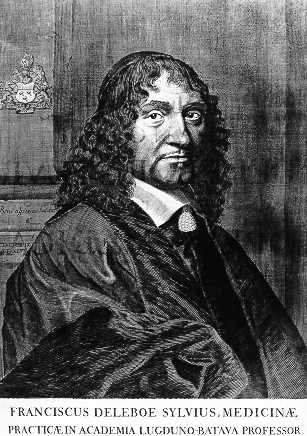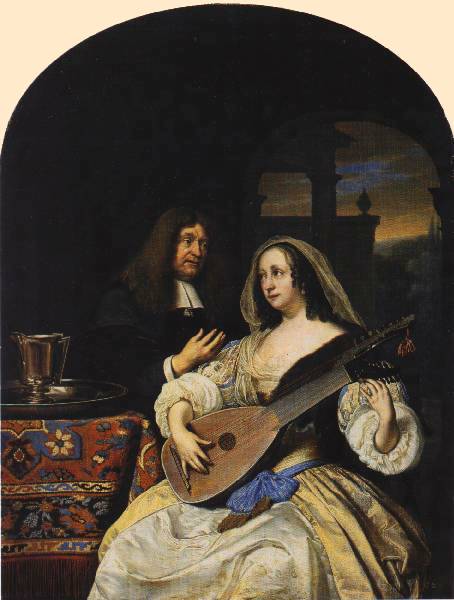<Back to Index>
- Physician Franz de le Boë (Franciscus Sylvius), 1614
PAGE SPONSOR


Franciscus Sylvius (11 May 1614, Hanau - 19 November 1672, Leiden), born Franz de le Boë, was a Dutch physician and scientist (chemist, physiologist and anatomist) who was an early champion of Descartes', Van Helmont's and William Harvey's work and theories. He was one of the earliest defenders of the circulation of the blood in the Netherlands.
Sylvius, a Latinization of "de le Boë" translated as "of the woods", was born in Hanau, Germany, to an affluent family originally from Cambrai, but worked and died in Netherlands. He studied medicine at the Protestant Academy of Sedan, and from 1632 - 1634 in Leiden under Adolph Vorstius and Otto Heurnius. In 1634 he held a disputation Positiones variae medicae under the presidency of Vorstius, in which he defended the proposition that there should be a pulmonary circulation. After that Sylvius made a study tour to Jena and Wittenberg, and on March 16, 1637 he defended a thesis entitled De animali motu ejusque laesionibus at the University of Basel under the presidency of Emmanuel Stupanus. After practicing medicine in his hometown Hanau he returned to Leiden in 1639 to lecture. In this period he became famous for his demonstrations on circulation. From 1641 on he had a lucrative medical practice in Amsterdam. While in Amsterdam he met Glauber, who introduced him to chemistry. In 1658 he was appointed the professor of medicine at the University of Leiden and was paid 1800 guilders which was twice the usual salary. He was the University's Vice - Chancellor in 1669 - 70.
In 1669 Sylvius founded the first academic chemical laboratory. For this reason, the building in which much of the Leiden University chemistry and natural science faculties are housed has the name Sylvius Laboratory. His most famous students were Jan Swammerdam, Reinier de Graaf, Niels Stensen and Burchard de Volder.
He founded the Iatrochemical School of Medicine,
according to which all life and disease processes are based on chemical
actions. That school of thought attempted to understand medicine in
terms of universal rules of physics and chemistry. Sylvius also
introduced the concept of chemical affinity as a way to understand the
way the human body uses salts and contributed greatly to the
understanding of digestion and of bodily fluids. The most important work
he published was Praxeos medicae idea nova (New Idea in Medical Practice, 1671).
He researched the structure of the brain and was credited as the discoverer of the cleft in the brain known as Sylvian fissure by Caspar Bartholin in his 1641 book Casp. Bartolini Institutiones Anatomicae. In this book, it is noted that in the preface that “We can all measure the nobility of Sylvius’s brain and talent by the marvelous, new structure of the brain”. And also, “In the new images of the brain, the engraver followed the design and scalpel of the most thorough Franciscus Sylvius, to whom we owe, in this part, everything that the brain has the most, or the most wonderful of”.
However Caspar Bartholin died in 1629 and Franciscus Sylvius only started medicine in 1632 and it has been argued that the words in this phrase describing the Sylcian fissure are either by his son Thomas Bartholin or indeed Franciscus Sylvius. In 1663 in his Disputationem Medicarum, Franciscus Sylvius under his own name described the lateral fissure: "Particularly noticeable is the deep fissure or hiatus which begins at the roots of the eyes (oculorum radices) [...] it runs posteriorly above the temples as far as the roots of the brain stem (medulla radices). [...] It divides the cerebrum into an upper, larger part and a lower, smaller part".
The Cerebral aqueduct and the Sylvius' angle are also named after him.
The mineral sylvite was named for Sylvius.
Sylvius is credited with the invention of jenever (gin). He owned a collection of 190 paintings, nine by Frans van Mieris and eleven by Gerard Dou, in the 17th century highly valued and pricely painters.